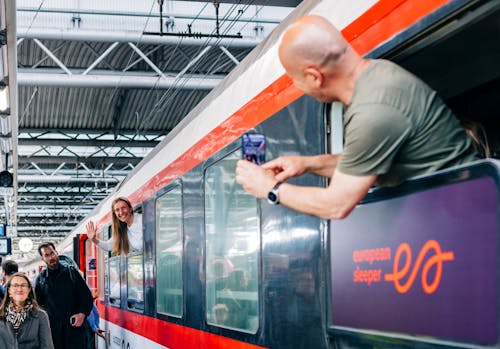X-Digital
Q42 has combined its Jumpstart method — our approach to quickly find new concepts around the primary process, prototype, validate, and implement — with KLM's fast validation environment.
In aviation, every minute counts. In the air but also at the gate. How do you improve the process when flights continue non-stop, 365 days a year?
With Q42, we can broaden solutions beyond just process changes: digital innovation can now be done lean and in real-time. This enables us to innovate faster than our competition.
KLM is a frontrunner with X-Gates, an innovation methodology to quickly find improvements and apply these directly across flights. But how do you keep that acceleration going when an innovation requires digital means, when software and hardware that the crew uses are part of innovation? how do you keep the experimenting process lean and fast?
Challenge: turning the plane around faster
Turning a plane around involves a lot more than just physically turning the plane around. Crew is scheduled, checked-in and debriefed. Travelers are checked in and assigned the right seats at the gate. Baggage and meals are loaded into the plane. Flight systems are doublechecked, travel schedules and weather forecasts are reviewed in detail.
And although this happens many times a day, no departure is the same. Passengers fall asleep at Starbucks, luggage is delayed from a change over flight, a Thai baboon has to be placed in the hold and a cockpit instrument has to be replaced. And in all these things, all flight crew — cabin crew, luggage crew, gate agents, and the command center — have to be constantly in sync.
The problem is that all those different roles are not in close proximity to each other and do not all have the same information at their disposal. Communication between the flight crew largely goes through walkie-talkies: noisy, awkward devices that only allow you to conduct one-on-one conversations.
Approach
Q42 always puts the end user at the center. So it only made it sense to do the same here. Given a process goal, we started by looking for the end user pains and bottlenecks. Our philosophy is simple: if you make something that users want, the change you seek will run its course naturally, instead having to try and force that change.
Together with KLM, we searched for user bottlenecks in interviews and co-creation sessions.
The solution
For starters, we dropped the separation between roles and introduced the concept of a 'flight team': a temporary team that transcends roles and, as a whole, is responsible for a smooth departure of a flight: on time, without drama, with happy passengers.
We made an app for the flight team that made the roles in the team more closely linked on everything that happens before depature. Key information is shown continuously and in real-time to everyone, on a screen that is always within reach. And we replaced the cumbersome walkie-talkies with a smart hands-free calling system that automatically connects the right group of people.
Results
Happy Crew: Happy users who proudly share their experiences with colleagues.
Measurably more efficient: More flights on time.
Quick result: From idea to validated prototype within a week—ready for testing at scale and implementation.





